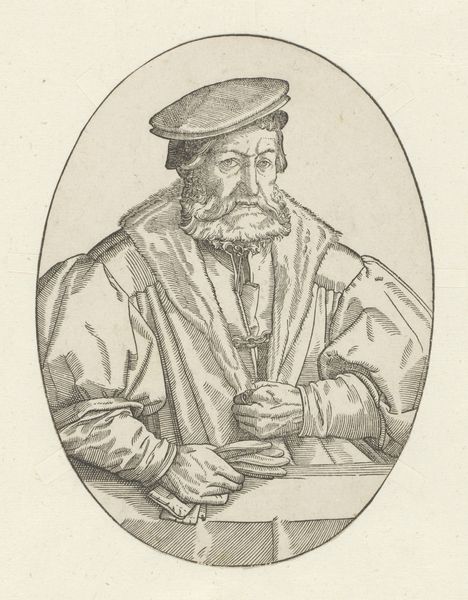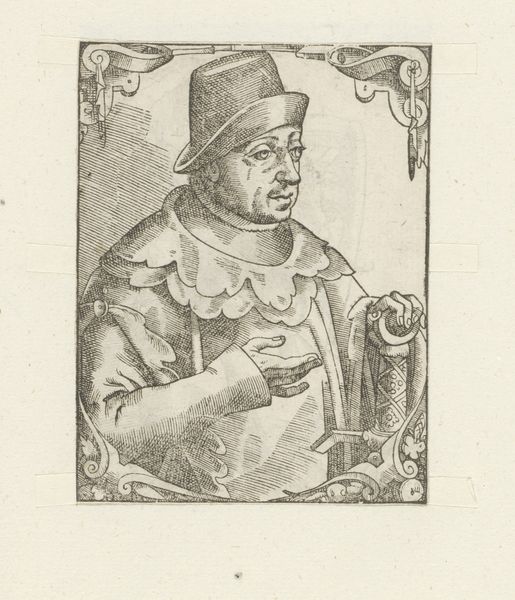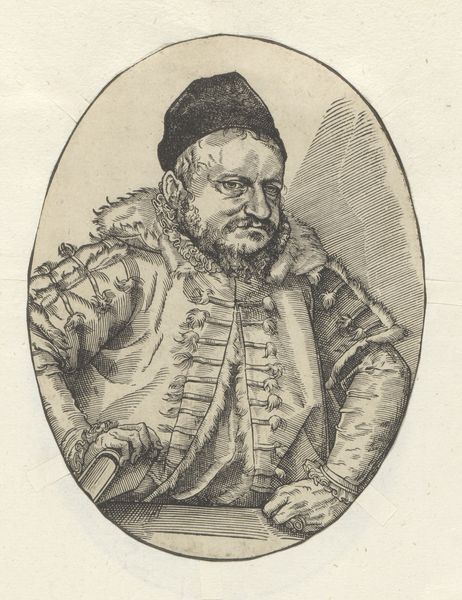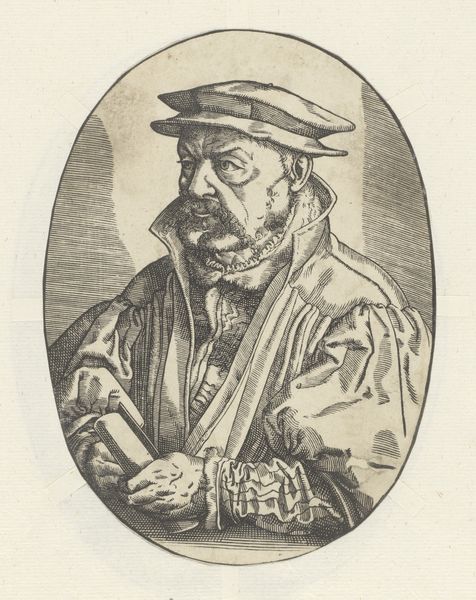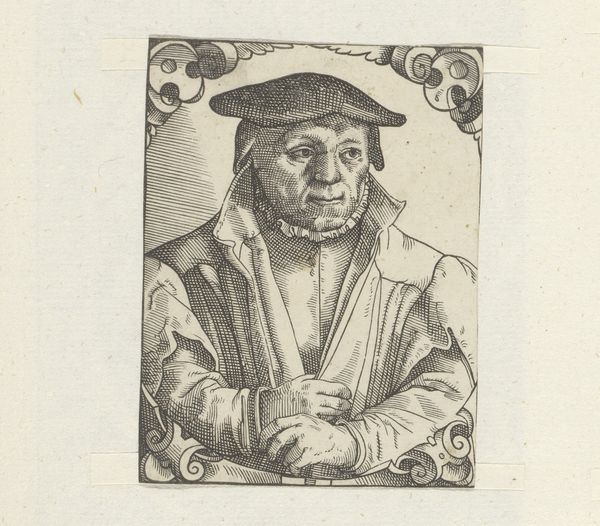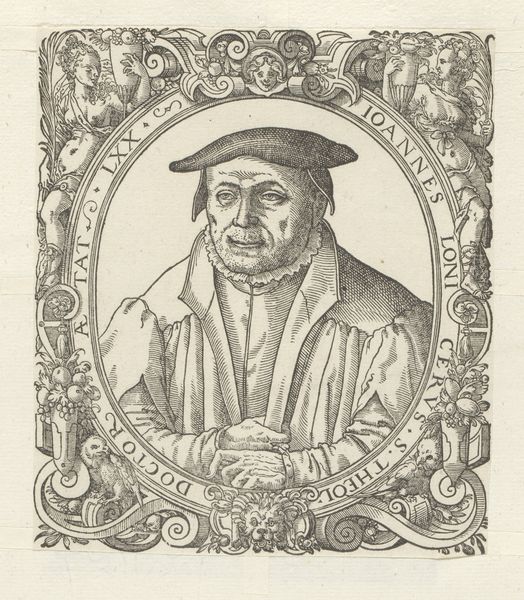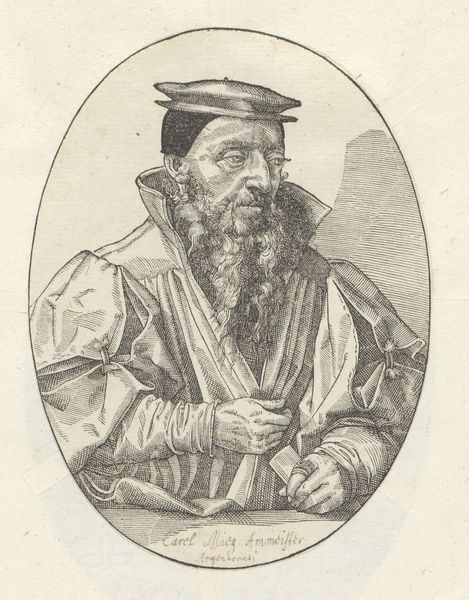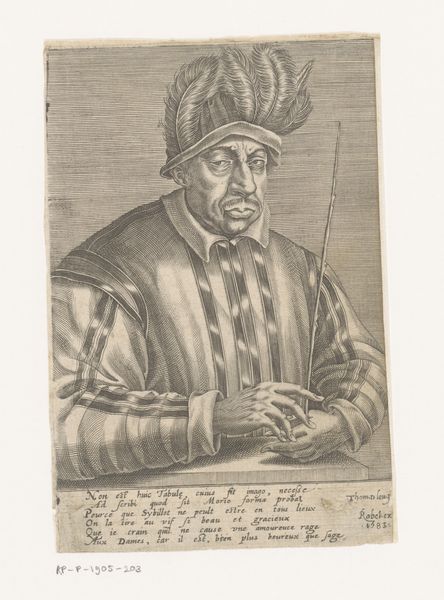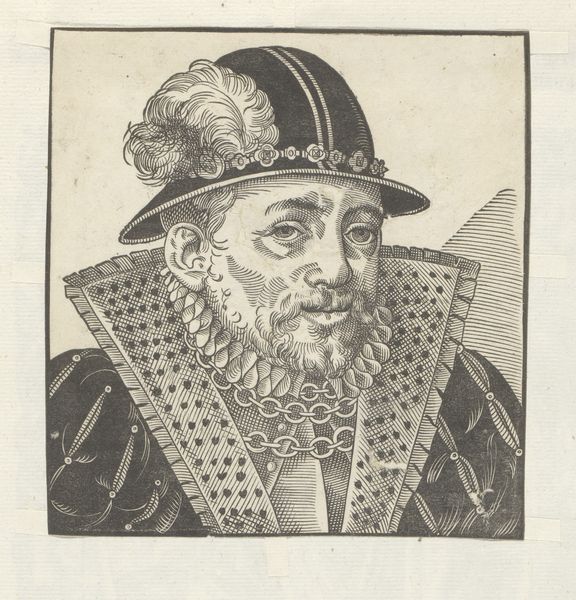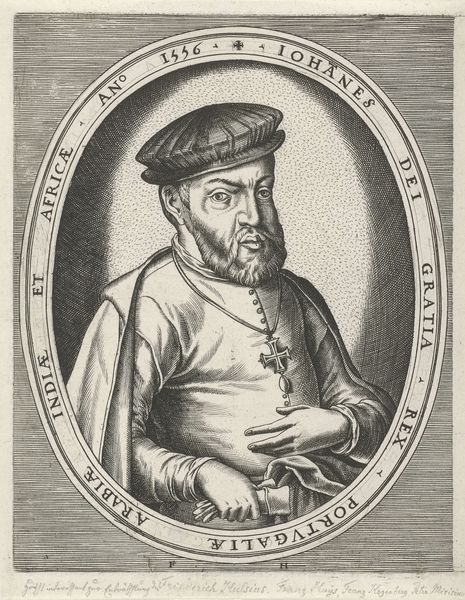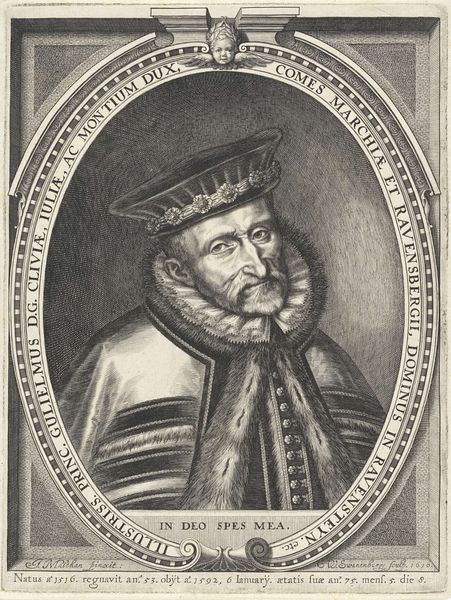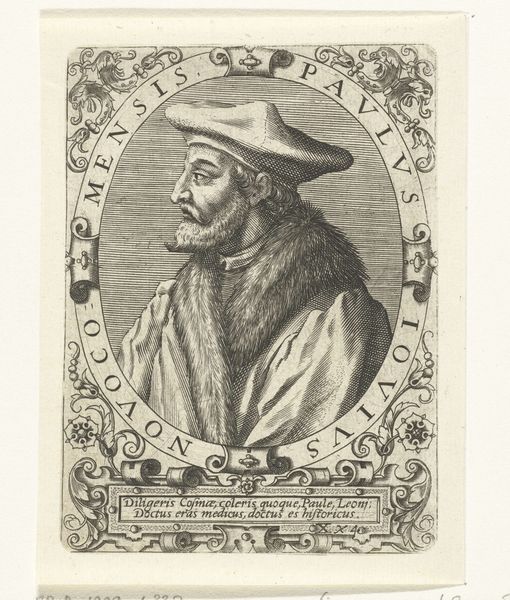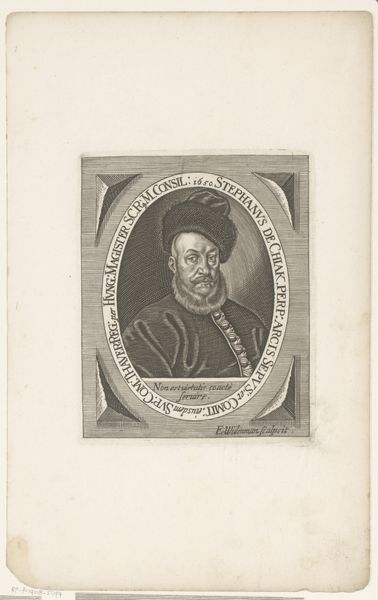
print, engraving
#
portrait
# print
#
old engraving style
#
figuration
#
form
#
11_renaissance
#
line
#
history-painting
#
northern-renaissance
#
engraving
Dimensions: height 152 mm, width 114 mm
Copyright: Rijks Museum: Open Domain
Editor: This is "Portret van Friedrich von Gottesheim," a Northern Renaissance engraving made sometime between 1549 and 1584 by an anonymous artist. It strikes me as a very formal, almost imposing portrait. What’s your read on this engraving? Curator: I see a work deeply embedded in the politics of representation and the assertion of status. Notice how the subject's clothing signifies wealth and authority within the context of 16th-century Europe. This isn't merely a likeness, it’s a constructed identity, carefully crafted for public consumption. Editor: So, you're saying this image served a very specific social function? Curator: Absolutely. Think about who had access to creating and distributing prints like these during the Renaissance. Consider the role of patronage, class, and power in shaping artistic production. The act of creating and disseminating this image was a privilege. What narratives are subtly enforced through this access? Editor: That makes me think about the limitations inherent in portraits from this period. The average person wouldn’t have had their image recorded. Curator: Exactly. Whose stories are told, and whose are deliberately left out? These are critical questions to consider when engaging with art from the past. The engraving style also reveals something, don’t you think? Its stark lines give the impression of something fixed and rigid. Does this rigidity invite critique of the power structures it may have supported? Editor: It’s fascinating how one image can reveal so much about society at the time. Curator: Indeed. Examining these power dynamics through the lens of contemporary theory allows us to understand how historical works continue to shape and reflect our present. Editor: I see how important it is to unpack these hidden social and historical layers. Curator: Precisely, art is never created in a vacuum, and being alive to its complexities helps us all better understand our place in the world.
Comments
No comments
Be the first to comment and join the conversation on the ultimate creative platform.
